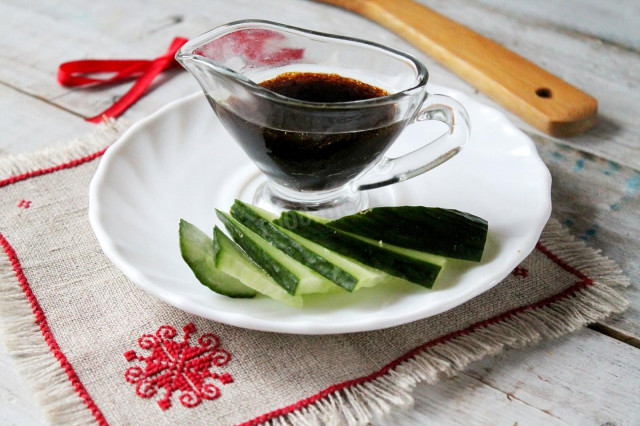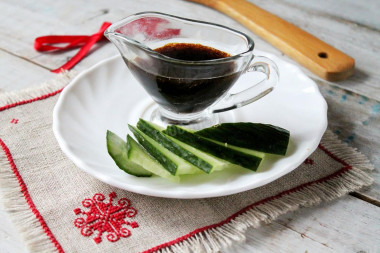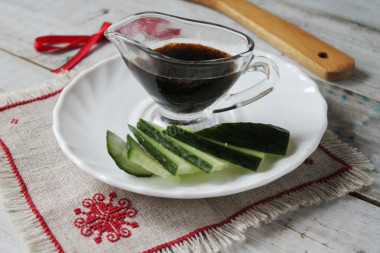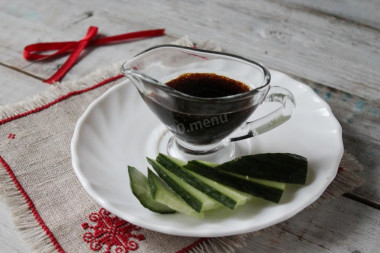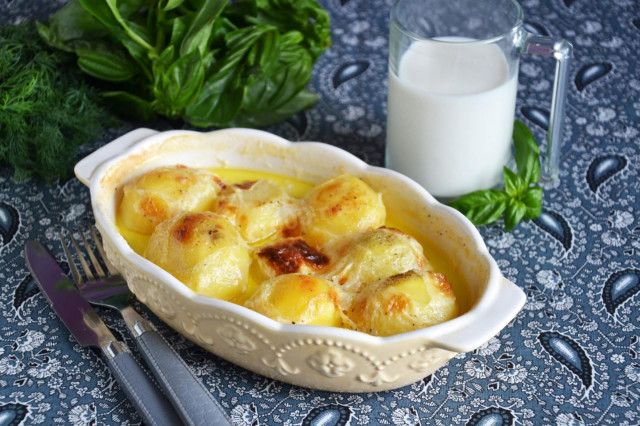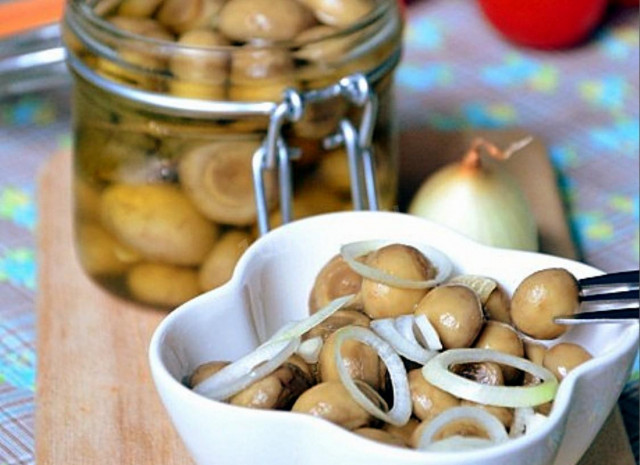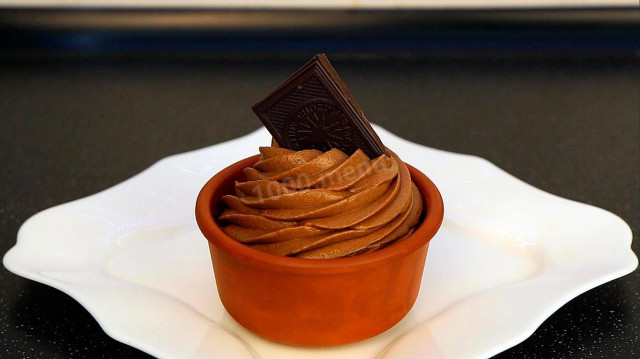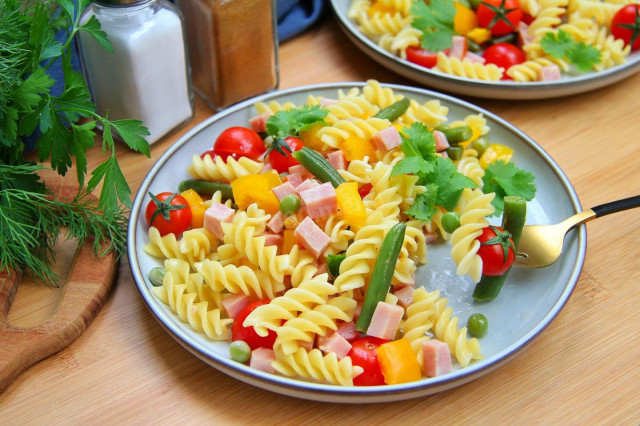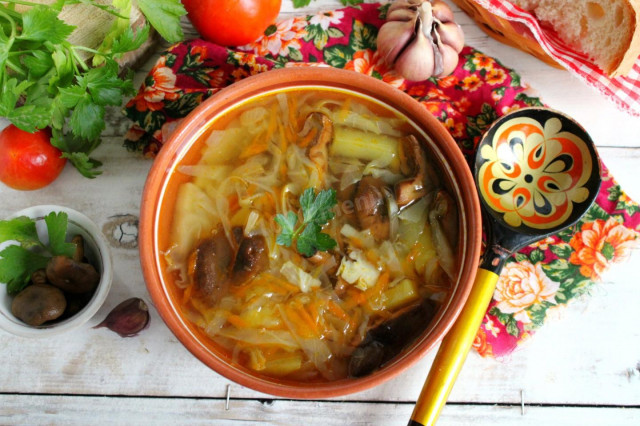Composition / ingredients
Step-by-step cooking
Step 1:
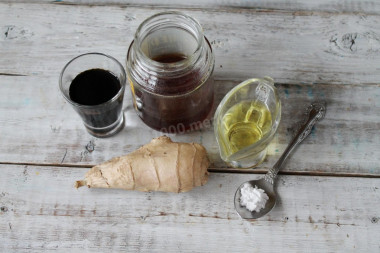
How to make unagi sauce? To prepare a traditional Japanese unagi sauce, take soy sauce, honey (preferably liquid, but real), ginger root, olive oil.
Step 2:
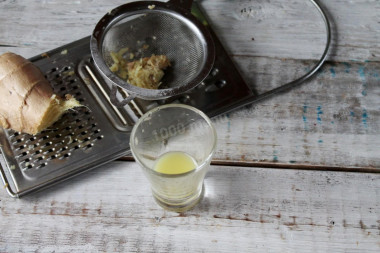
You will need ginger juice for the sauce, so you need to make it first. It's very simple. The ginger root is quite juicy, so it is easily squeezed out after grating the ginger on a fine grater. The next step is to rub a piece of root and squeeze the juice through a gauze piece folded in half, or you can simply put the cake in a strainer and press with a spoon, the juice will flow easily.
Step 3:
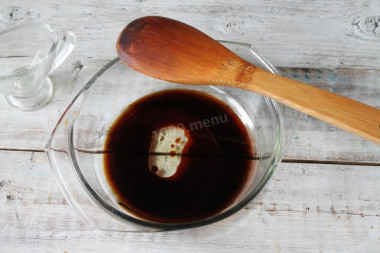
In a saucepan or saucepan, mix soy sauce, honey and olive oil, warm up, but do not boil. Sweetness is achieved due to the addition of honey, in order not to lose its useful properties, it is not recommended to boil the sauce, only to warm it up.
Step 4:
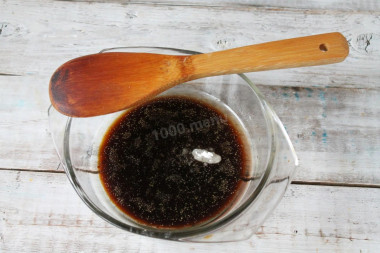
Add ginger juice and starch. Mix well again and boil without boiling over low heat until thickened. Add potato starch, if you use corn starch, take it twice as much.
Step 5:
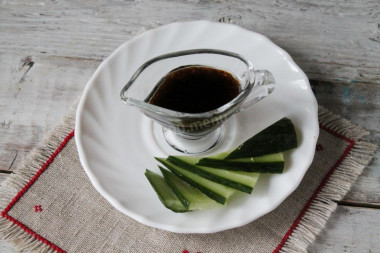
That's it! Unagi sauce is ready! It is very tasty to serve it with fried fish, chicken, just with vegetable slicing. It gives an unusual spicy and pungent sweetness to all products, which makes their familiar taste not immediately recognizable and attractive.
Since the degree of salinity, sweetness, bitterness, sharpness, acid, burning is individual for everyone, always add spices, spices and seasonings, focusing on your taste! If you put some of the seasonings for the first time, then keep in mind that there are spices that it is especially important not to shift (for example, chili pepper).
When adding soy sauce to a dish, it is worth considering that it has a rather salty taste. Reduce the total amount of salt, otherwise you risk over-salting.
Caloric content of the products possible in the composition of the dish
- Honey - 400 kcal/100g
- Ginger - 80 kcal/100g
- Dry ginger - 347 kcal/100g
- Pickled ginger - 51 kcal/100g
- Soy sauce - 51 kcal/100g
- Starch - 320 kcal/100g
- Olive oil - 913 kcal/100g

